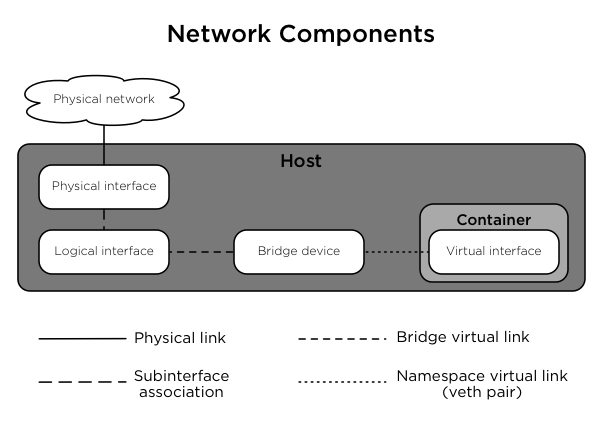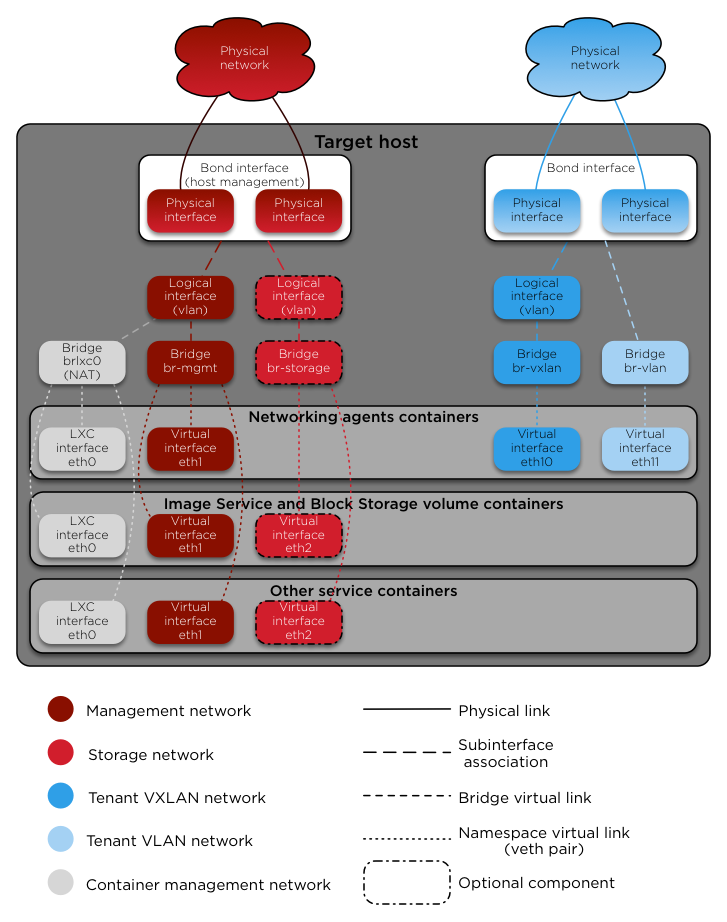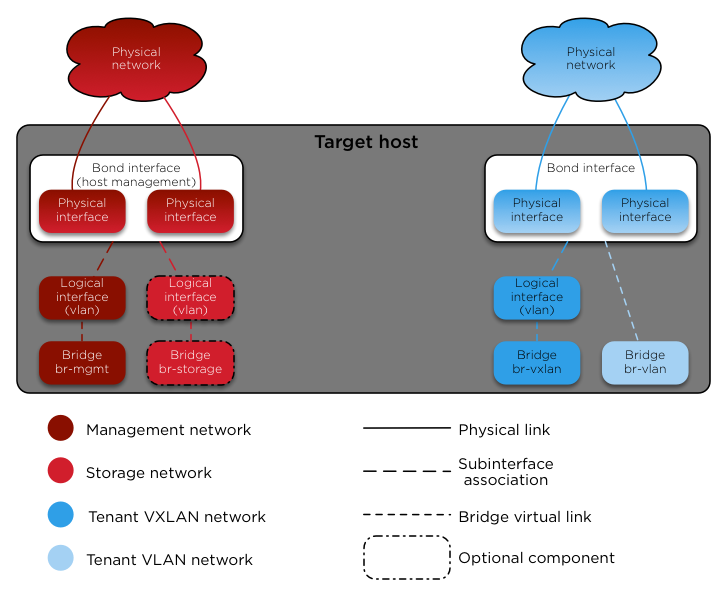Home OpenStack-Ansible Installation Guide
Host networking¶
The combination of containers and flexible deployment options requires implementation of advanced Linux networking features such as bridges and namespaces.
Bridges provide layer 2 connectivity (similar to switches) among physical, logical, and virtual network interfaces within a host. After creating a bridge, the network interfaces are virtually “plugged in” to it.
OSA uses bridges to connect physical and logical network interfaces on the host to virtual network interfaces within containers.
Namespaces provide logically separate layer 3 environments (similar to routers) within a host. Namespaces use virtual interfaces to connect with other namespaces including the host namespace. These interfaces, often called veth pairs, are virtually “plugged in” between namespaces similar to patch cables connecting physical devices such as switches and routers.
Each container has a namespace that connects to the host namespace with one or more veth pairs. Unless specified, the system generates random names for veth pairs.
The relationship between physical interfaces, logical interfaces, bridges, and virtual interfaces within containers is shown in Figure 1.2, “Network components”.
Figure 1.2. Network components

Target hosts can contain the following network bridges:
- LXC internal lxcbr0:
- Mandatory (automatic).
- Provides external (typically internet) connectivity to containers.
- Automatically created and managed by LXC. Does not directly attach to any physical or logical interfaces on the host because iptables handle connectivity. Attaches to eth0 in each container.
- Container management br-mgmt:
- Mandatory.
- Provides management of and communication among infrastructure and OpenStack services.
- Manually created and attaches to a physical or logical interface, typically a bond0 VLAN subinterface. Also attaches to eth1 in each container.
- Storage br-storage:
- Optional.
- Provides segregated access to block storage devices between Compute and Block Storage hosts.
- Manually created and attaches to a physical or logical interface, typically a bond0 VLAN subinterface. Also attaches to eth2 in each associated container.
- OpenStack Networking tunnel/overlay br-vxlan:
- Mandatory.
- Provides infrastructure for VXLAN tunnel/overlay networks.
- Manually created and attaches to a physical or logical interface, typically a bond1 VLAN subinterface. Also attaches to eth10 in each associated container.
- OpenStack Networking provider br-vlan:
- Mandatory.
- Provides infrastructure for VLAN networks.
- Manually created and attaches to a physical or logical interface, typically bond1. Attaches to eth11 for vlan type networks in each associated container. It does not contain an IP address because it only handles layer 2 connectivity. This interface can support flat networks as well, though additional bridge configuration will be needed. See more on network configuration here
Figure 1.3, “Container network architecture” provides a visual representation of network components for services in containers.
Figure 1.3. Container network architecture

By default, OSA installs the Compute service in a bare metal environment rather than within a container. Figure 1.4, “Bare/Metal network architecture” provides a visual representation of the unique layout of network components on a Compute host.
Figure 1.4. Bare/Metal network architecture
